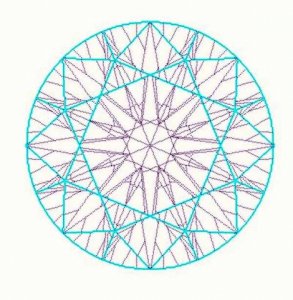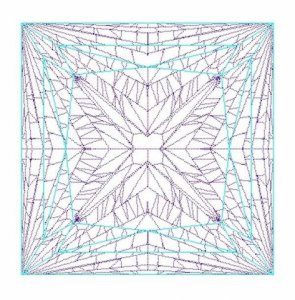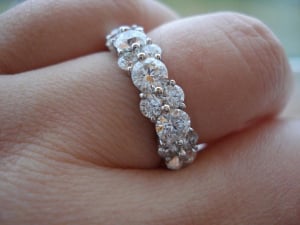- Joined
- Jul 27, 2009
- Messages
- 3,761
Nice one Wink. I hate it when the diamond moves and then you have to start all overWink|1411660189|3756869 said:cflutist|1411657671|3756844 said:Wink|1411654436|3756806 said:Remember the last time you were sitting in a barber's or hairdresser's chair and saw yourself reflecting in two mirrors getting smaller and smaller into infinity.
Those were not real yous, they were virtual yous being reflected in virtual mirrors, each one smaller than the one before it.
Virtual facets are the same in a diamond. The 57 facets in a round brilliant cut diamond set up virtual mirrors within the diamond and you are seeing the results of those virtual mirrors when your diamond moves and some of the virtual facets turn on and others turn off, resulting in the scintillation that you love to see from your diamonds.
According to research done by the American Gem Society Laboratory, a one carat diamond will produce about 200,000 scintillation events as it is rotated over a 40 degree arc. The better cut the diamond, and the larger the initial virtual facets, the more of those scintillation events will actually be visible to the human eye. A top cut diamond might have between 12,000 and 14,000 eye visible scintillation events in a one carat diamond. A more poorly cut diamond will have thousands less as the smaller beginning virtual facets will much more quickly become too small for the human eye to visualize. (Larger diamonds can have larger starting virtual facets if they are cut well and thus will have even more eye visible scintillation events, with more flashes of both white and colored light, which is one of the reasons we like larger diamonds.)
I remember taking my grand children to the Learning Center here in Boise when they had an exhibit with many mirrors and all sorts of angles. It was amazing to stand between them and see yourself from so many different angles, getting smaller and smaller. I tired to imagine what it would be like to be inside a diamond, but it made my head hurt...
Wink
Ok, so a 2 ct would have larger starting virtual facets than a 1 ct, and a 3 ct would have even larger. How many eye visible scintillation events does each have? Is it proportional? Logarithmic?
That information is above my pay grade. Maybe Pete Yantzer would know, he was deeply involved in the research at the AGSL. I lose track of them after about 100 and have to start over every time I try to count them...
Wink
Seriously though, it's a good question. I don't think there is a definite number as it also depends upon the particular eye viewing the events and distance. And I think it effects the perception of fire more that white light sparkles. There probably is a calculable relationship between size and viewable events but I am not a mathematician. However, there was an MIT mathmeticians and a space scientist who designs mirrors for deep space observation involved in the AGS study. For those interested in the hard core science you can see it here.
http://www.agslab.com/spie/spie_lo_res.pdf







300x240.png)